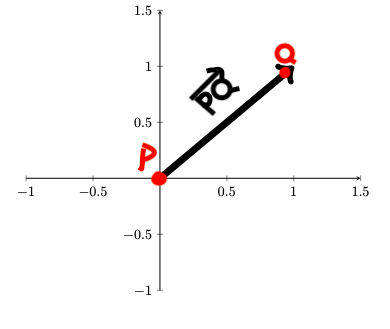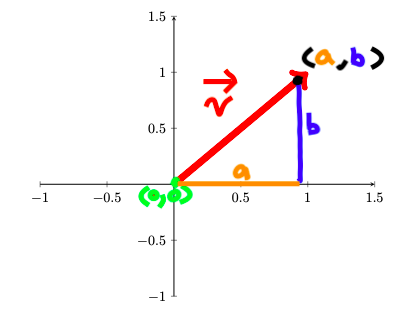Vectors
INTRO
Unlike a scalar, which only has magnitude (e.g., a mass of 50 kg), a vector is a quantity that has both magnitude and direction (e.g., a wind speed of 10 km/hr NW). We typically represent a vector by a directed line segment; its length represents the magnitude, while an arrow on the end of the line segment represents the direction.NOTE: Two vectors are equal if and only if they have the same direction and the same magnitude
NOTATION
To denote a vector, we often use boldfaced font, or an arrow or horizontal line above the letter representing the vector. We may either have a single letter to denote a vector, or we may use two letters, where the 1stgives the initial (starting) point of the vector while the 2nd gives the terminal (ending) point of the vector. For example, we may have \(\textbf{PQ}\) or \(\overline{PQ}\) or \(\overrightarrow{PQ}\), all of which represent the vector that starts from point \(P\) and ends at point \(Q\).

ALGEBRAIC INTERPRETATION
If we have a vector \(v\) with its initial position at the origin, \((0, 0)\), then this is called a “position vector.” If its terminal (ending) point is at \((a,b)\), then we write \[ \overrightarrow{v} = <a,b>\]Here, \(a\) is the horizontal component of the vector, and \(b\) is the vertical component of the vector.

